Did you know a hamster's teeth are continuously growing? To avoid overgrowth of their teeth, your hamster will seek out items to chew on. This chewing helps to file or grind down those chompers. To aid our furry friends with the upkeep of their teeth, there are many kinds of toys or chew treats you can provide them with, and you might wonder if the wood is safe to chew. We have done the research to provide you with this answer and more.
Hamsters can eat wood with some precautions. Your hamster should only be given untreated, unpainted wood and never wood that you pick up from your yard. Purchased wood from a place like your local pet store is ideal and considered safe for your hamster.
Hamsters require some special care when it comes to their teeth and their diet. Wood is a great option to help maintain the health of your hamster's teeth. With many species of wood to choose from, how can we be sure the type of wood we are giving is safe? Continue reading as we discuss safe wood options for your furry friend and alternatives that can be used.
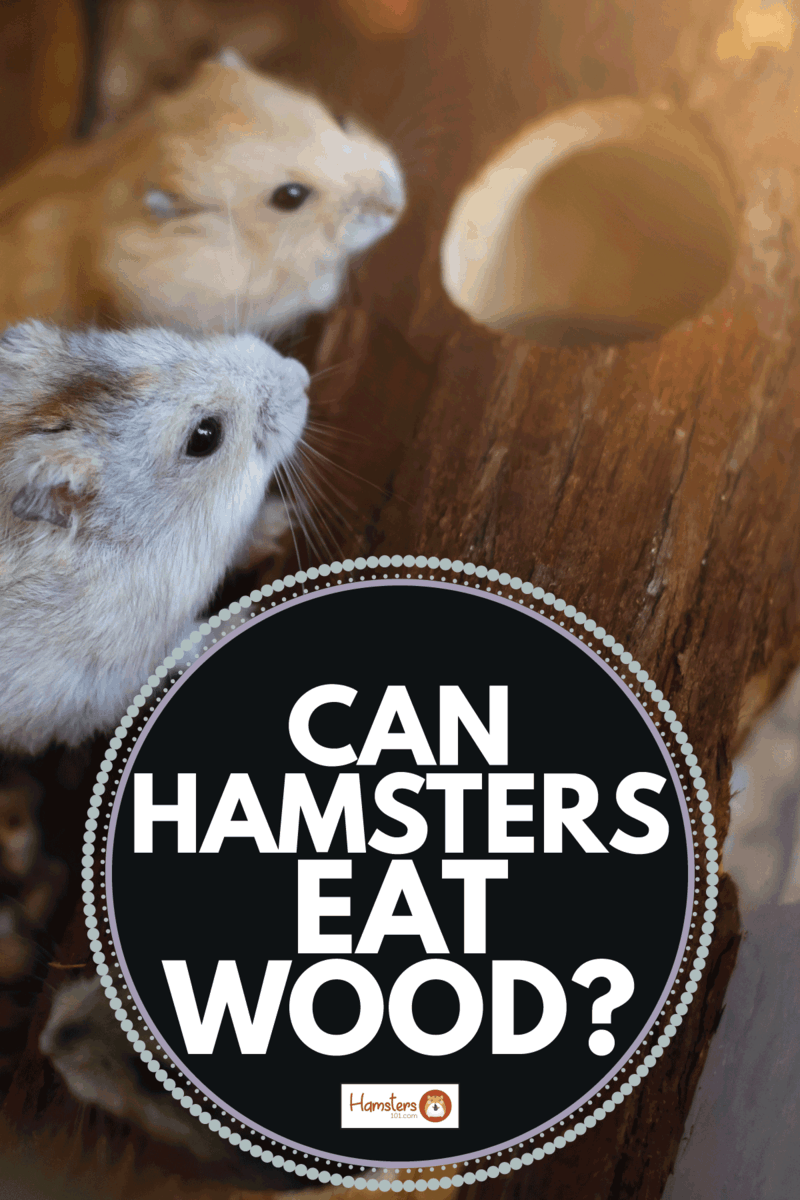
Your Hamster and Wood
Hamsters spend a lot of time chewing. It is vital that you only put safe, non-toxic items in their homes to nibble on. You want to provide your hamster with toys or treats that are entertaining and aid in their oral health. On top of this, it is good to switch things up to provide variety and prevent boredom. Let's talk about what woods are considered safe and scrumptious for your pet.

What Kind Of Wood Is Safe For Hamsters To Chew On?
Do not give your hamster wood from the wild. You run the risk of introducing bacteria or parasites to your hamster's home that can end up hurting their health. Specific woods that are safe for your hamster include:
- Nut woods: Hazelnut and Pecan
- Evergreen: Kiln Dried White Pine
- Fruit Woods: Blackberry, Mulberry, Pear, Apple, and Crab Apple
- Deciduous Woods: Aspen, Elm, Ash
- Other Woods: Bamboo, Magnolia, Sycamore, Cottonwood
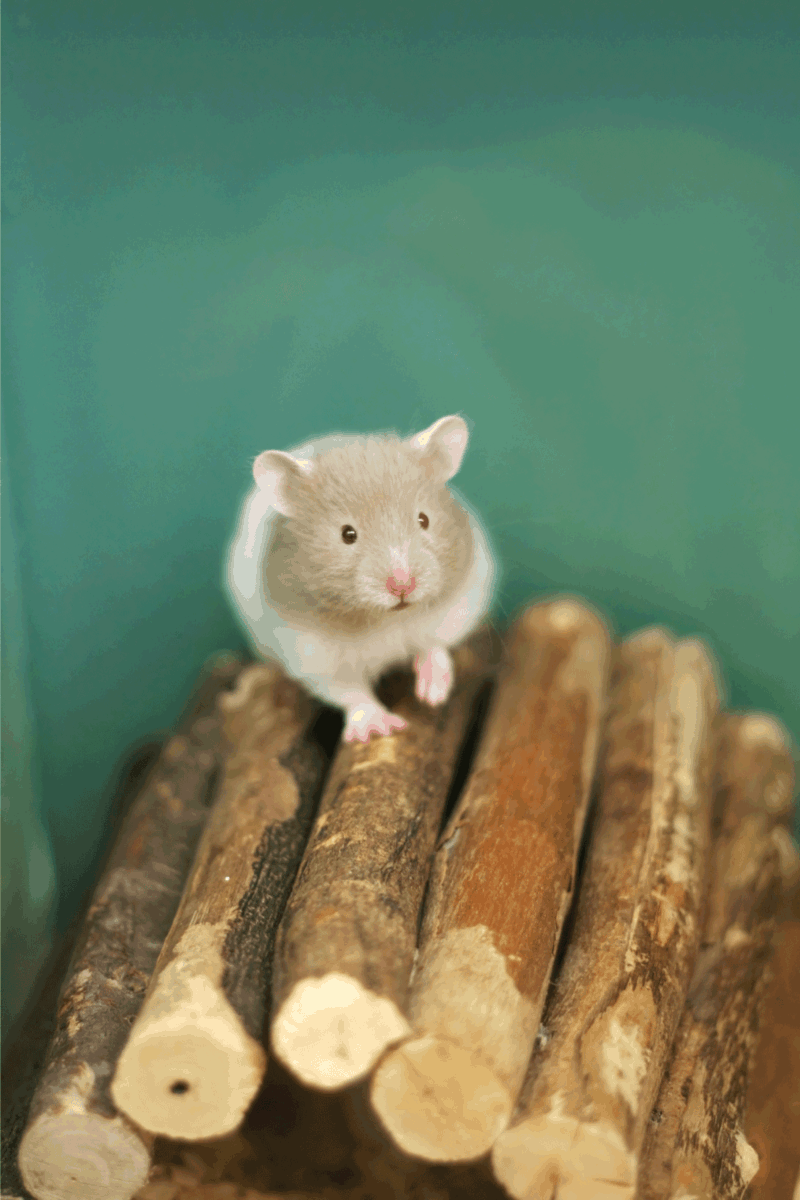
There are many kinds of woods that are safe for your hamster, but keep in mind the other must-haves that make a wood safe. Any wood given to your hamster cannot be treated or painted and cannot come from the wild. If you are unsure if a specific wood is safe or not, it is always best to contact your veterinarian or local pet store to double-check before giving it to your furry friend.
Is bamboo wood safe for hamsters?
Hamsters can eat bamboo. Like all other woods for your hamster, bamboo should be storebought to ensure there are no toxins or bacteria present. Most pet-safe bamboo that is sold in stores is labeled as "True Bamboo." You can find hamster-safe bamboo in pet stores or online.
You can find a 200-gram pack of hamster-safe bamboo chew sticks here on Amazon.
Read more on our blog post, "Is Bamboo Safe For Hamsters?"
Is Grape Wood Safe For Hamsters?
Grape wood is vine-like pieces of wood harvested from Vitis plants. These branches are often placed in enclosures to give your hamster something to climb on, but is this type of wood safe for chewing? Yes, grape wood is safe for hamsters as long as it is storebought, untreated, and doesn't include a paint job. Grape wood comes in funky shapes and can be a playful natural accent added to your hamster's home.
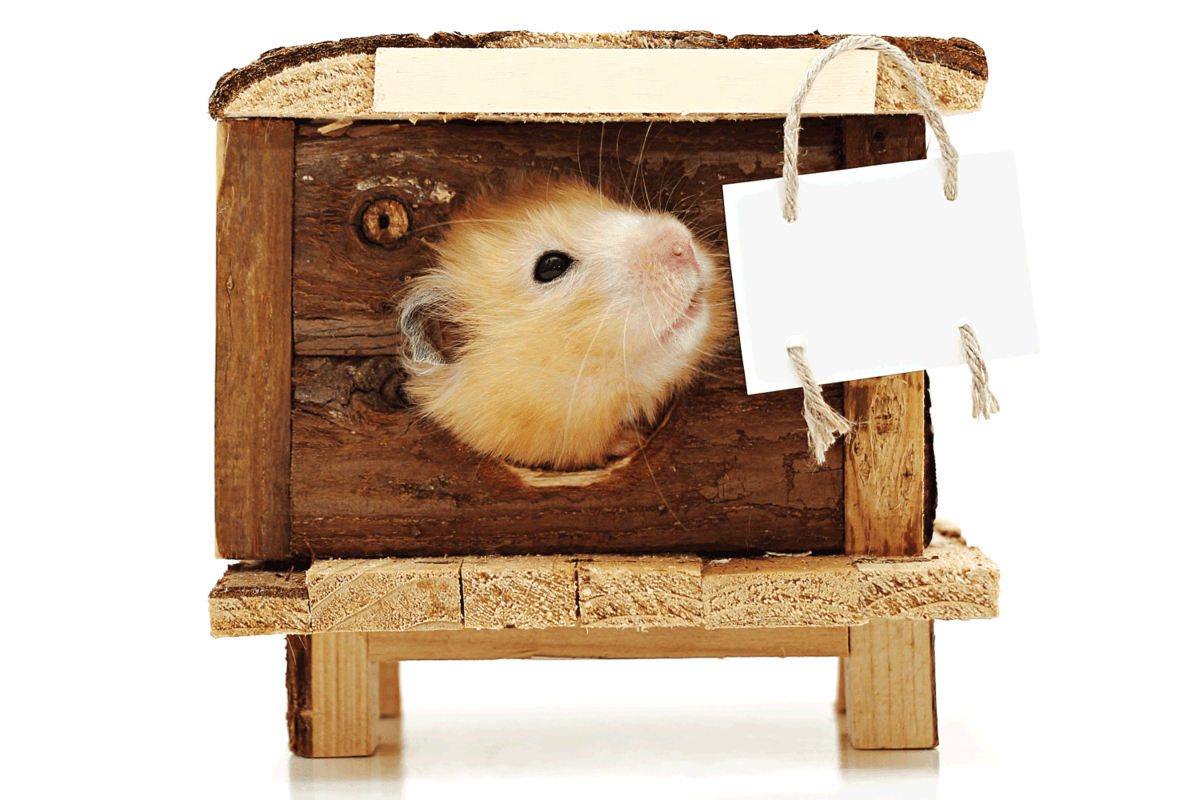
Have a look at this sand-blasted grape wood here on Amazon.
Read more on our blog post, "Natural Hamster Cage Ideas (Including 13 Examples To Inspire You)."
Which Driftwood Is Safe For Hamsters?
Driftwood is smooth and great for climbing. Adding some to your hamster home can help create that natural feel to the environment. Types of driftwood that are considered safe for your hamster include:
- Sumatran
- Marsh Root
- Saba Wood
- Redmoor Root Wood
The majority of driftwood is safe for your hamster if it follows the guidelines of no paint or chemical treatments. Driftwood that is not safe for your pet includes Mopani Wood, Cedar, and Pine. These examples are not safe due to the presence of tannins and oils in these woods.
You can find a pack of pet-safe driftwood here on Amazon.
Tannin is an organic substance in some plants, barks, and driftwood. This substance is classified as an astringent polyphenolic molecule and is considered toxic to hamsters. In this 2003 research paper on the effects of tannins on Chinese hamster cells, it mentions that tannins can decrease the viability of cells and contribute to the formation of DNA single-strand breaks.
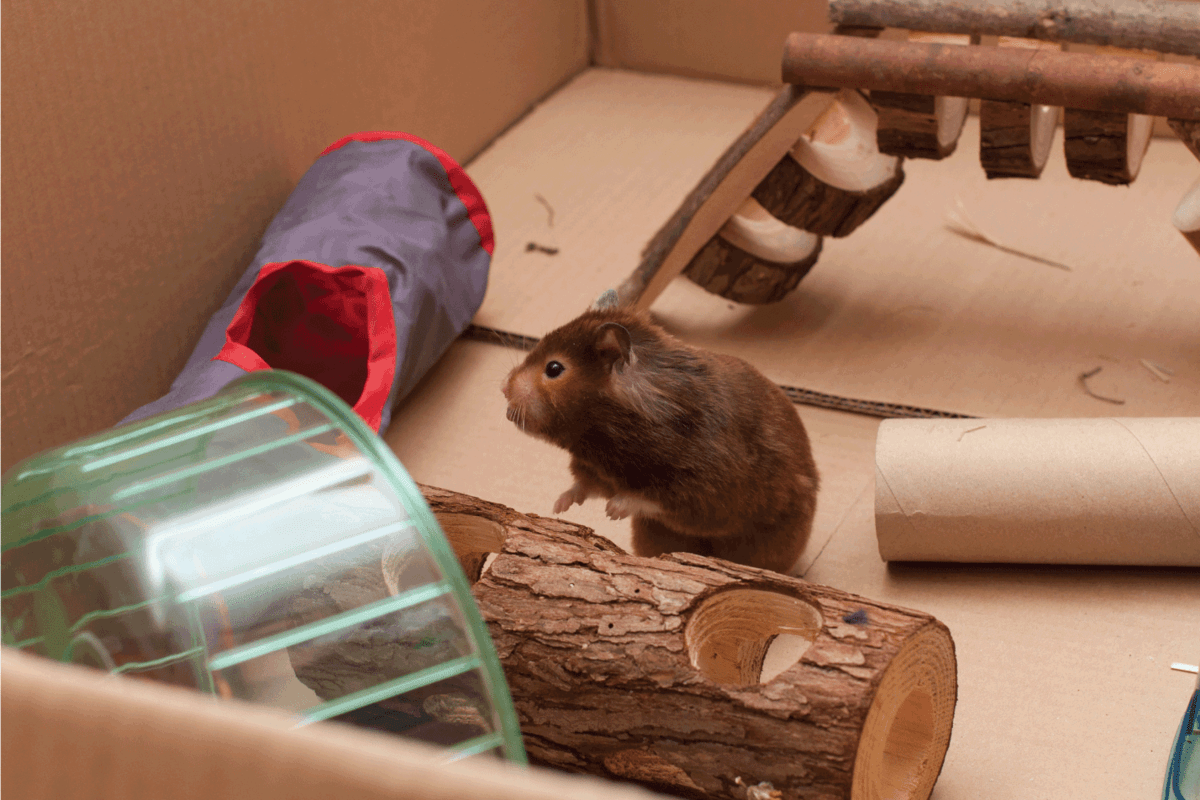
Cedar and Pine contain certain oils that are toxic to your hamster. If you have ever smelled Pine or Cedar, you instantly notice a specific aroma. This aroma comes from the Phenols within the wood. These Phenols are great for repelling insects but are dangerous to animals. Exposure to these types of wood can cause your hamster liver, kidney, or respiratory system issues.
What Branches Are Safe For Hamsters?
There is a long list of branches that are safe for your hamster. In general, fruit tree branches are a great option for your pet. Branches from fruit trees that should be avoided include fruit trees whose fruit contains a solid pit. Some examples of solid pit fruits include mangoes, cherries, and plums.
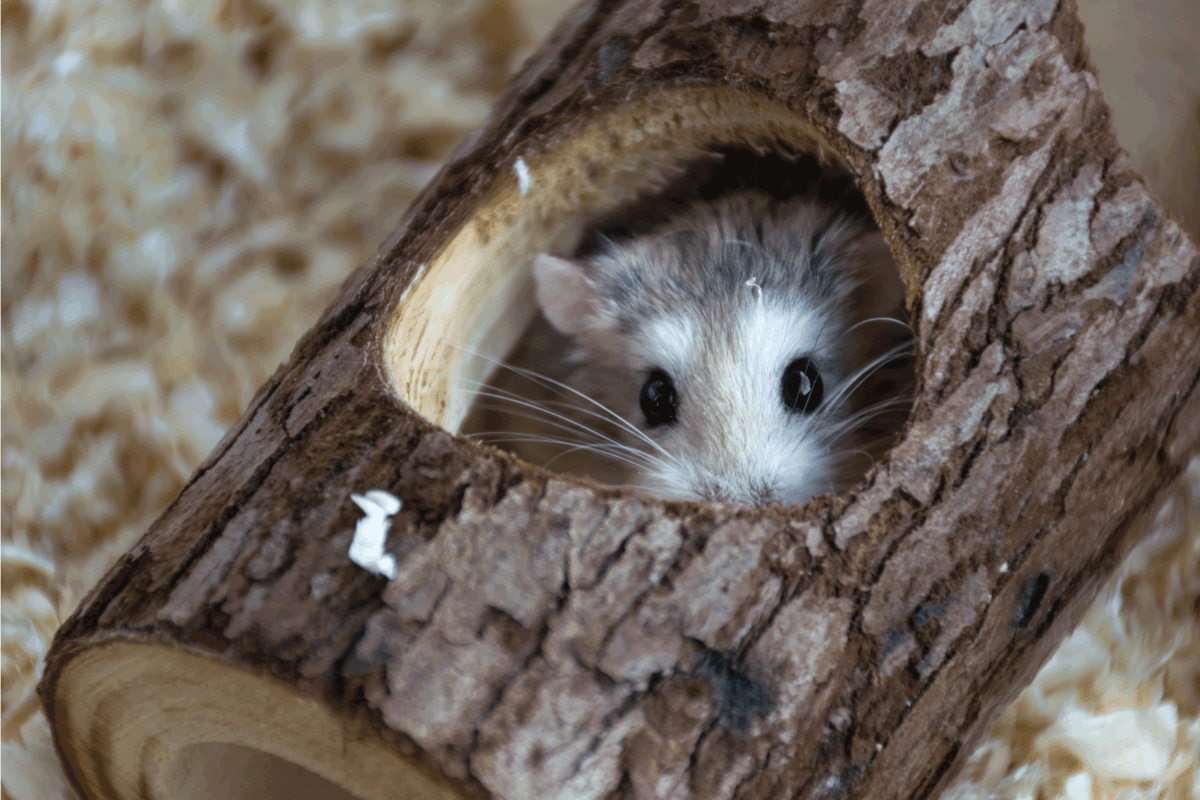
Types of branches that are safe for hamsters include:
- Pear
- Kiwi
- Apple
- Blackberry
Keep in mind that grabbing branches from the roadside or park is not recommended. Freshly grabbed branches like this can contain pollutants from the environment, harmful bacteria, or parasites. Stick to store-bought branches to keep your hamster safe.
Amazon offers a pack of apple branches for your hamster here.
What Can I Give My Hamster To Chew On?
If plain wood sticks are not a good option for you and your pet, there are plenty of alternatives. Hamster chew toys are always available. These can come as hanging toys for your hamster's home, chewing blocks, or grinding pads.

You can find teeth grinding lava blocks here on Amazon.
You can also choose from an assortment of hamster treats that are ideal for chewing. Hard timothy hay biscuits, glazed nut sticks, and carrot nibble sticks are all great options for your furry friend. Figuring out what is your hamster's favorite or ideal item to chew may take some trial and error. Keeping a variety of items or rotating treats, toys and sticks can help find what works best and what your hamster loves most.
Have a look at these baked timothy carrot biscuits here on Amazon.
Read more on our blog post, "9 Best Hamster Chews Your Hammy Needs In 2021."
In Summary
There are many types of wood your hamster can enjoy and a handful they cannot. Whenever you're seeking out a wood treat for your furry friend, make sure it is free of chemical treatments, pesticides, paints, or stains. It is always best to err on the side of caution and purchase all wood products through your local pet store. You can also find pet-friendly wood products online.
Each hamster is unique, and its preferences vary. It is normal for one hamster to love a type of wood and dislike another. To find the best chew toy, treat, or branch, try rotating or adding new items to your hamster's home often. The variety will keep their attention and prevent boredom, which can lead to other naughty behaviors.
We hope you found this article helpful when choosing wood for your hamster's home and maybe found some inspiration for a new toy or two. Looking to learn more about treats for your hamster? Browse through our blog post, "What Treats Can I Give My Hamster?"







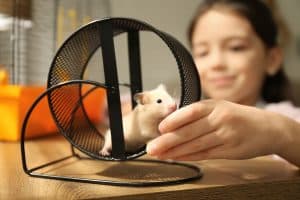
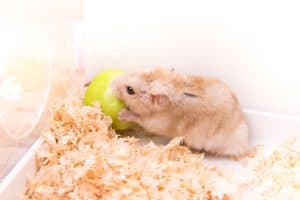
![Cute hamster lying down after eating a lot of broccoli, Can Hamsters Eat Broccoli [Inc. Cooked or Raw]](https://hamsters101.com/wp-content/uploads/2020/12/A-cute-hamster-lying-down-after-eating-a-lot-of-broccoli-300x200.jpg)